As Akron's $1 billion sewer system overhaul winds down, are more rate increases coming?

People say the Akron Wastewater Treatment Plant off the Cuyahoga River used to smell a lot worse before more than $120 million worth of improvements were made.
The river itself has become a lot cleaner as well, as Akron nears completion of the city's costly, multiyear effort to stop raw sewage from entering the river during rainstorms.
Akron Service Director Chris Ludle, who has helped oversee the improvements, said the city has been just one of the players in bringing the river back.
"It's been a heavy burden on our ratepayers but what it has shown, and all the accomplishments we've done and all the projects we've finished in the last 12 years, it really shows how the river has come back − the fish and the bugs and the attainment and the recreational benefits have gone up exponentially," he said. "We were one part to bring that river back into attainment. The health of the river has improved because of what we've done and what Cleveland has done and what everybody else has done."
In 2009, the city entered into an agreement, called a consent decree, with the U.S. and Ohio Environmental Protection Agency to make extensive improvements to its sewer system to reduce and eliminate sewage overflows that had polluted the Cuyahoga River and its tributaries for decades. It was approved in federal court in 2014.
The city has started asking contractors to bid on one of the last projects, the $232 million Northside Interceptor Tunnel meant to catch water when heavy rains overwhelm the treatment plant's capacity and combined stormwater/sanitary sewers in older neighborhoods overflow into the river.
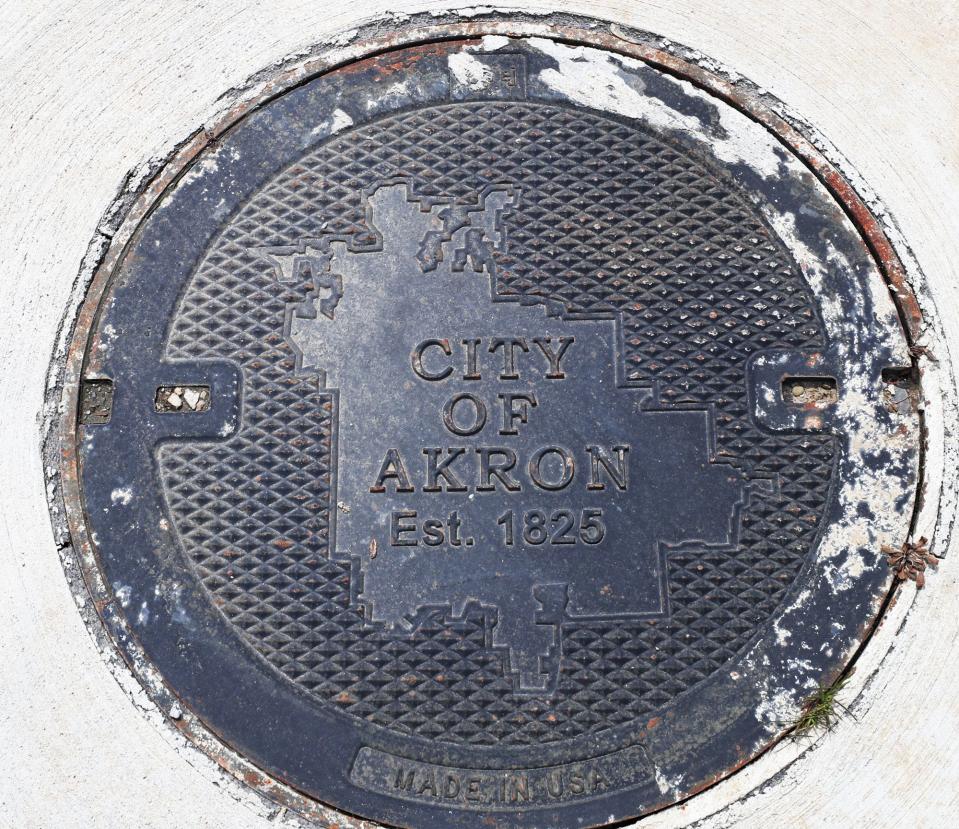
Four pre-qualified contractors, selected due to the project's complexity, met with city officials Thursday and have until June 22 to submit proposals. The contract should be awarded in August and construction should be completed within four years.
The United States and Ohio EPA have agreed to let the city build a 16-foot-diameter tunnel in place of a proposed 24-foot tunnel to prevent sewage from overflowing into the river during heavy rains.
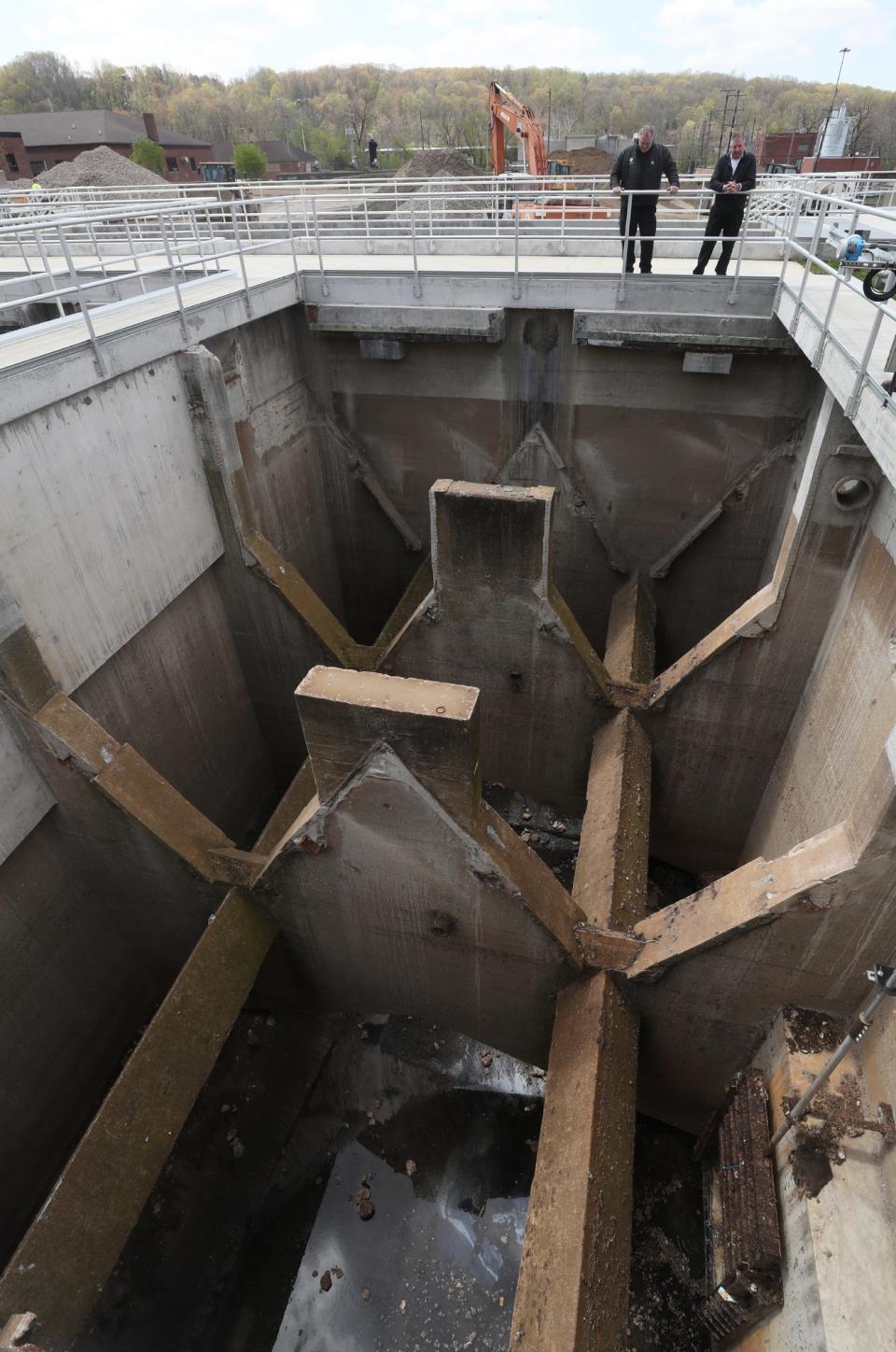
The downsizing is expected to save the city about $66 million. An earlier estimate of $140 million in savings had included costs anticipated for one last treatment facility, which has yet to be scheduled for construction.
Court approval of the Northside tunnel remains pending, but is expected. Approval was granted for two prior amendments.
The city has until the end of 2027 to complete system improvements under the agreement's long-term control plan.
Akron system improvements built on borrowed money, increased sewer rates
The overall project already has cost the city more than $700 million. By the time it's complete in four years, the price tag is expected to exceed $1 billion — though efforts continue to lower the cost.
The city has said it wants to avoid more increases for ratepayers, who are solely responsible for funding the improvements. It started increasing rates in 2009 when residents paid $3.04 per 100 cubic feet. By 2015, rates more than tripled to $10.66 per 100 cubic feet and haven't increased since.
Akron Finance Director Steve Fricker said about $700 million in bonds and loans − some for up to 45 years − have paid for construction. The debt costs about $45 million per year, which is about half of what customers pay in their bills. He said the other half of the $90 million in receipts covers operations.
"It's likely at some point in the future, we will need to do another increase," Fricker said. "We think we have a couple of years before we need to probably do that, but it is kind of a moving target ... some of it depends on how long the projects take and when we have to start paying. Obviously, that Northside tunnel is going to be large. So you know, when do we need to start paying on that project?"
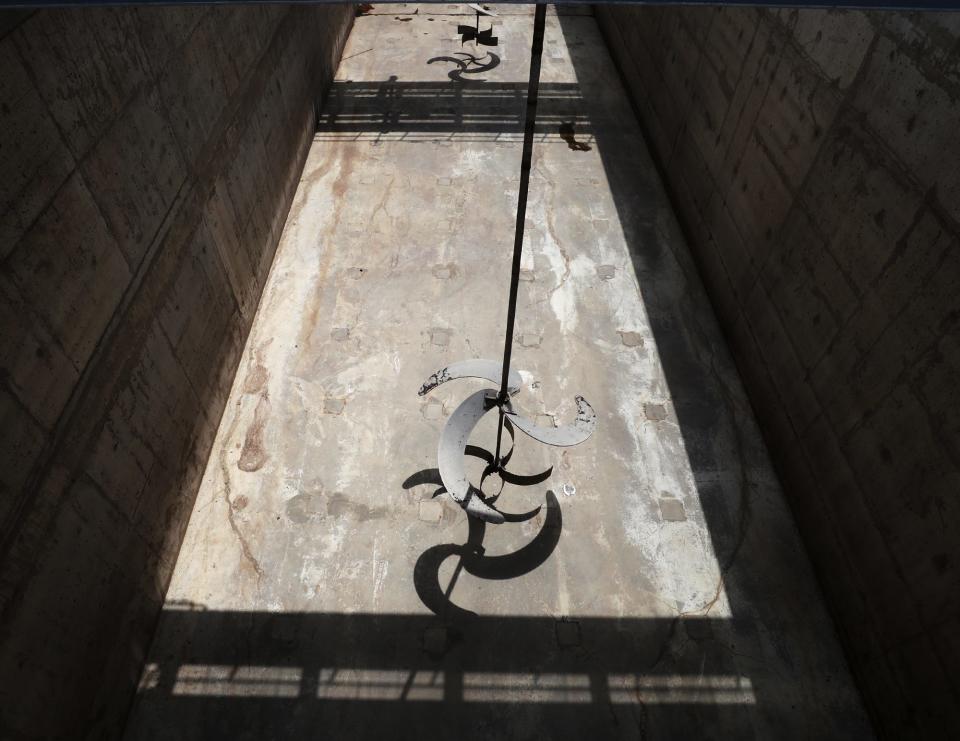
In the meantime, improvements have cut annual wastewater overflow from 2.4 billion gallons per year to under 100 million gallons, Ludle said.
"What we've found with all the improvements we've done in the system and with the way we're handling the overflow from this tunnel, and we call it the real-time control, we have reduced that down to 90 million gallons in the typical year of overflow and only three times it would overflow," he said.
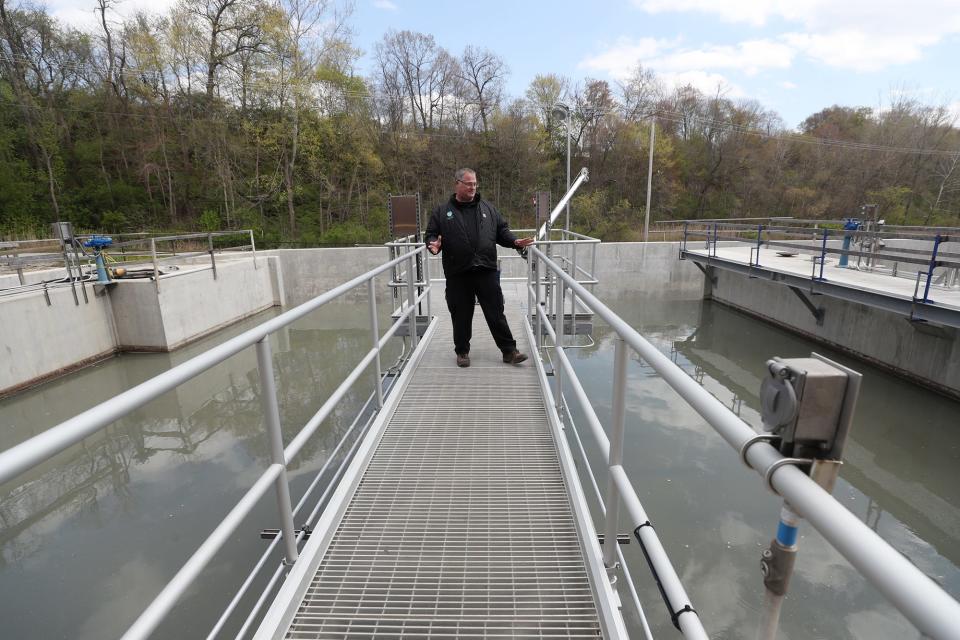
To put those amounts into perspective, some water towers can hold 1 million gallons of water, so the difference is equivalent to going from 2,400 water towers of overflow down to 100 each year.
The Northside Project should reduce the number of places where sewage overflows from dozens to just a handful.
The final project, yet to be scheduled, is an "enhanced high-rate treatment facility," which would treat overflow that still happens during extreme events from the 24-food diameter Ohio Canal Interceptor Tunnel, completed in 2020. It's cost is expected to be around $200 million, but the city is negotiating alternative improvements.
Two aspects of Northside Project ready to begin
An initial Northside Interceptor Tunnel plan mandated by the consent agreement called for a 24-foot tunnel to be built along Riverside Drive in the city's North Hill neighborhood. State and federal EPA officials have agreed with the city's projections that a 16-foot tunnel would be sufficient to hold runoff for treatment.
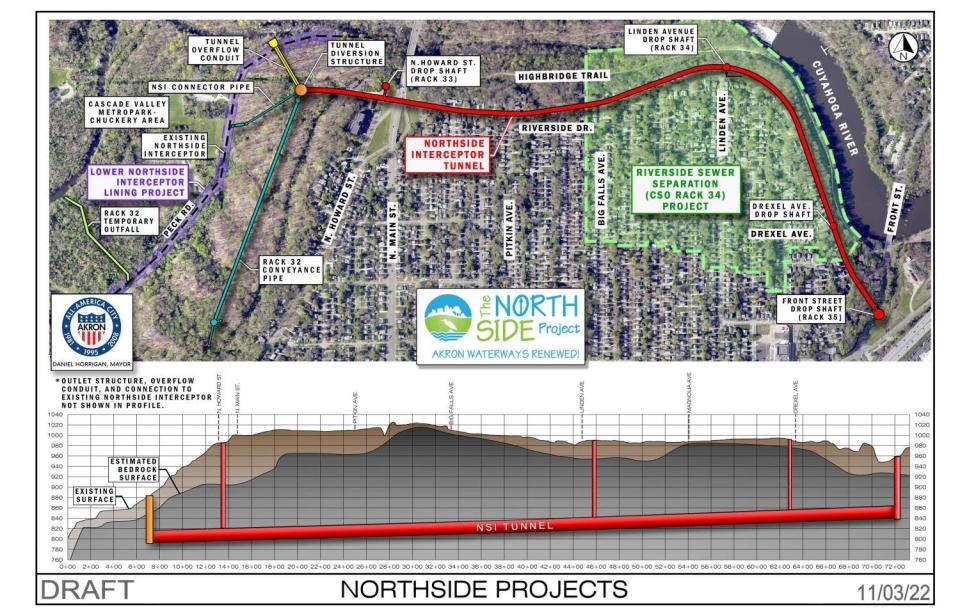
Two other facets of the Northside Project will address issues with sewage overflow in the North Hill project area. Both were awarded to contractors last year.
The first is a $4.6 million project that will line the walls of a 48-inch brick sewer interceptor with material that will make it impervious to ground water seeping in, which adds to the volume the system has to handle.
The second involves construction of new, $6.9 million storm sewer lines along Riverside Drive and streets located between Big Falls Avenue and Drexel Avenue now through the end of 2024. The existing sewer will remain as a sanitary-only system feeding greatly reduced volume into the Northside Interceptor Tunnel.
More: Akron completes final link in massive sewer connection
Hundreds of millions already spent on Akron's sewage system
In upgrading the city's sewage system, the biggest-ticket items so far include the Ohio Canal Interceptor Tunnel, along with improvements to the wastewater treatment facility, among other improvements.
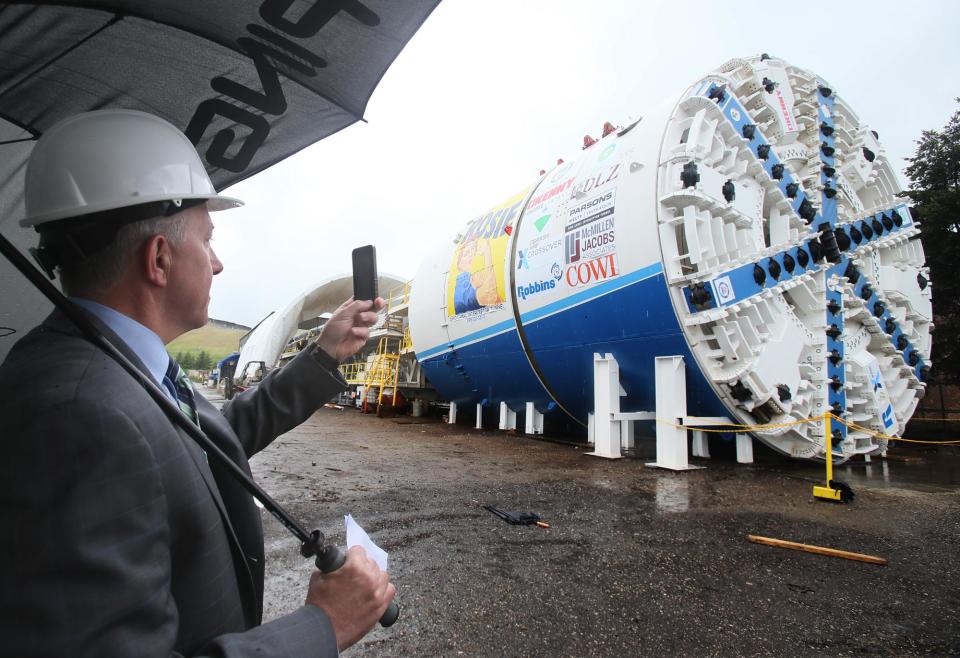
In 2020, the city completed construction of the $303 million Ohio Canal Interceptor Tunnel, which can hold up to 25 million gallons of water during storm events. That water is released gradually into the sewage treatment plant for treatment before being discharged into the Cuyahoga River. The Northside Interceptor Tunnel would do the same, with a capacity of around 10.3 million gallons.
The city has also spent more than $125 million on six storage basins, with a combined capacity of more than 18 million gallons. Release of water from the storage basins and interceptor tunnel into the wastewater plant is controlled by operators in the plant's control room.
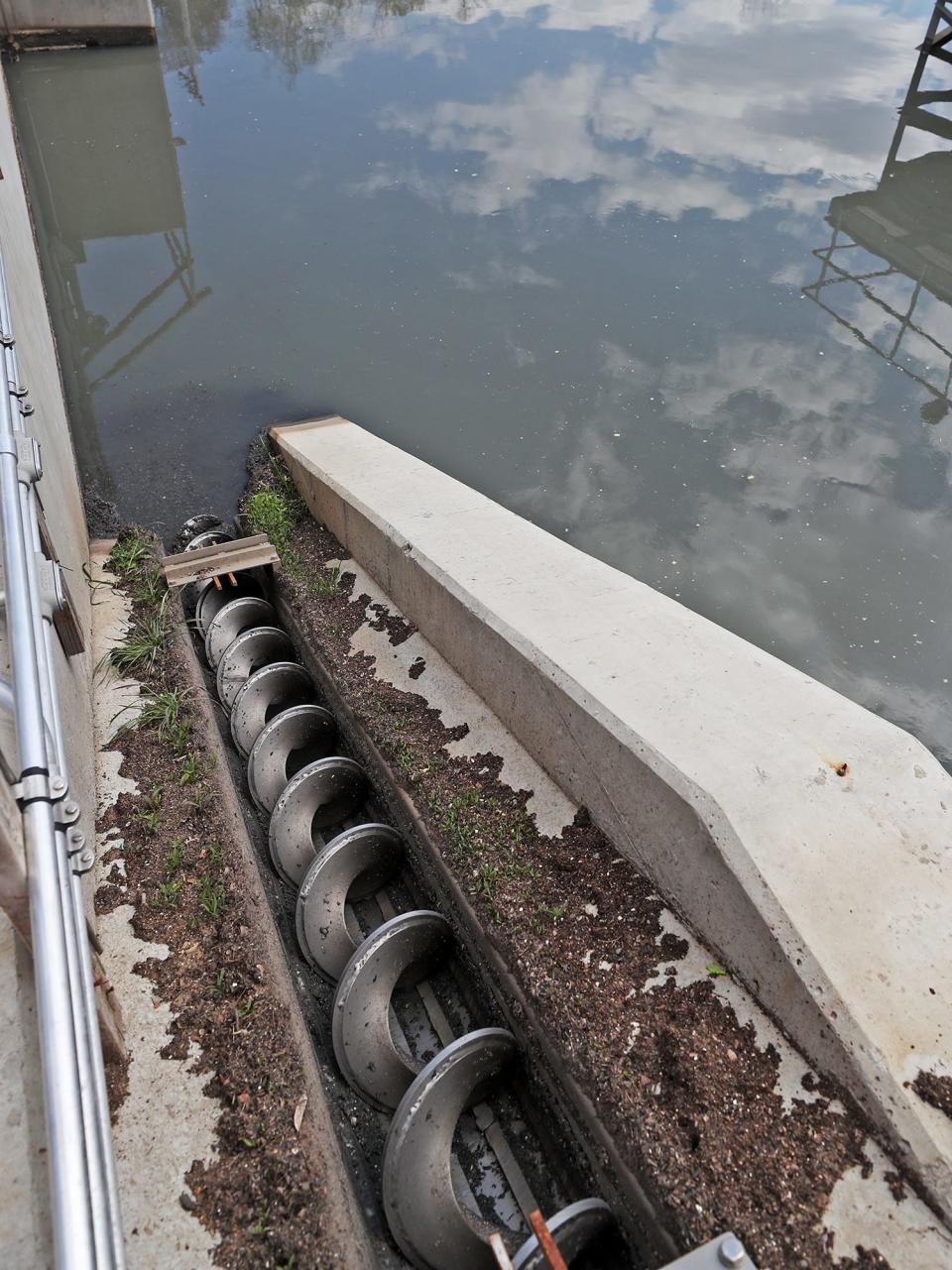
While the interceptor tunnel and new and existing storage basins bring the system's total capacity to around 67 million gallons of storage, the city has more than doubled the treatment plant capacity, from about 110 million gallons per day to 280 million gallons in the past 10 years.
Increasing the facility's capacity to 220 million gallons cost $43.5 million and was completed in 2019.
The facility's $81 million BioCEPT addition (an acronym combining biological agents with "Chemically Enhanced Primary Treatment"), became operational at the end of 2021. BioCEPT, holds 10 million gallons at a time and adds 60 million gallons per day of treatment capacity.
City officials say the consent decree is one of the most stringent in the country, requiring Akron to eliminate almost all combined sewer overflows that would occur in the typical year. As a comparison, the city of Cleveland is allowed 500 million gallons per year, Columbus is permitted 250 millions and Toledo is allowed 140 million.
Eric Marotta can be reached at emarotta@gannett.com. Follow him on Twitter @MarottaEric.
This article originally appeared on Akron Beacon Journal: Akron takes next step in sewer system overhaul. Will rates increase?

 money
money 